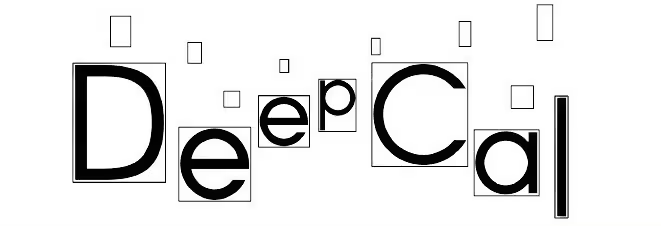In the automotive industry, precise camera calibration plays a critical role in ensuring the safety...
Exploring Real World Calibration Examples
When vehicles leave the factory from an Original Equipment Manufacturer (OEM), they receive an End of Line (EOL) calibration of a variety of sensors including whatever cameras, RADARs and LiDARs are installed. The sensor extrinsic calibration (position and rotation on the vehicle) might be nominal for that vehicle at that time and configuration but will start degrading immediately with time, vibration, and load. Similarly the sensor intrinsic calibration might be ideal at the factory, but will also start degrading immediately with temperature, air pressure, and UV exposure. Unfortunately many OEMs treat sensor calibration as a one-and-done process at the factory and never again. The assumption that calibration is constant over the vehicle's lifetime is wrong.
Degraded calibration directly impacts ADAS and safety system performance.
- A camera which has mis-calibrated yaw might not brake for a pedestrian in front of the vehicle, because the sensor is pointed the wrong way (and thinks the pedestrian is outside the driving tube).
- A camera with mis-calibrated pitch might turn left in front of oncoming traffic (look at this picture), because the sensor is pointing the wrong way (and does not see vehicles coming down the hill).
Let’s dig into a couple use cases where online, real time, dynamic calibration (like DeepCal offers), is critical to vehicles.
High speed:
An automotive company identified an issue (already in production) in their cars at very high speeds which negatively impacted ADAS functions. This manufacturer builds vehicles which travel at speeds where suspension compression from aerodynamics impacts the vehicle height and attitude. The suspension at these speeds is so significantly compressed that sensor calibration is impacted and has the knock-on effect of degrading vehicle safety and Advanced Driver Assistance Systems like automatic emergency braking and adaptive cruise control.
- Current solution: degrade/disable safety and ADAS systems at high speed.
- DeepCal solution: our dynamic calibration accounts for vehicle attitude, increasing safety by enabling ADAS systems in these high-dynamic situations.
Vibration:
An automotive company identified an issue (already in production) in their cars where cameras mounted near the A pillar were no longer able to be used for safety and ADAS functions. The vibration (flutter) of the camera mount occurred sympathetically with other structural components, to a degree that the sensor extrinsic calibration was impacted. With the calibration impacted, that camera was no longer able to be used for safety and ADAS functions (like blind spot monitoring, adaptive cruise control, and lane centering) were critically reduced.
- Current solutions: delay ADAS functionality introduction, reinforce sensor mounting ($), recall/replace previously produced vehicles ($$$$).
- Deepcal solution: our dynamic calibration operates fast enough to handle vibrations and flutter - both increasing safety and avoiding the costs associated with reinforcing sensor mounts, or even worse, recalls.
Vehicle Loading:
An automotive company identified an issue (already in production) in their cars where, upon loading the vehicle significantly, the vehicle pitch impacted the ADAS function. The company was able to identify that, when fully loaded, the ADAS sensors were pointing at an orientation which statistically degraded the fleet ADAS performance.
- Current solution: accept degraded safety and ADAS systems while the vehicle is loaded.
- DeepCal solution: our dynamic calibration accounts for vehicle attitude, increasing safety by enabling ADAS systems in these high load situations.
Moving sensor location:
Multiple automotive companies have placed cameras in side-view mirror housings for e.g. blind spot monitoring. Those same cameras could and should be used for more advanced driving functions (e.g. lane centering, adaptive cruise control, automatic emergency braking, etc.). Unfortunately, because side view mirror housings can be moved (e.g. folding up the mirrors when parking/locking the vehicle), the camera position can change dramatically. Even with motorized side view mirror housings, it is not easy to return the housing and the camera to the same exact position every time the mirror housing moves. This means that cameras placed in side view mirrors have a difficult or expensive path to being used to improve vehicle safety and driver assistance systems.
- Current solution: ASIL qualified ($$$$) motors for side-view mirror housing, placing other cameras around the vehicle to cover the same FOV ($$ and redundant) or delaying release of safety functions.
- Deepcal solution: dynamic calibration of sensor location each time the mirror is moved
Aftermarket retrofits:
If an end user or a fleet management company wants to retrofit sensors onto a vehicle - for example a safety-focused or functional dashcam (e.g. from Nauto), or aftermarket driver assistance features (e.g. from Comma.ai), those cameras will not have been mounted at the factory. They will not have received factory calibration, and using that data for training models or deploying safety systems will be at a disadvantage because of poor calibration.
-
- Current solution: degraded functionality of aftermarket safety and ADAS systems.
- DeepCal solution: our dynamic calibration accounts for vehicle attitude, increasing safety by enabling ADAS systems in these aftermarket systems.
In each of these cases, DeepCal can help. Our ZeroClick software calibration line can continuously calibrate these sensors, in the wild, without needing to return to a service center, without needing to be placed on turntables or have robots moving around the vehicle.
See more details on how Zero-Click works:
Want to know more about how DeepCal can optimize your calibration? You can schedule a meeting below, and we can discuss further. Subscribe to our newsletter and follow us on social media.






